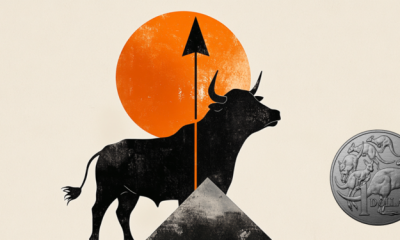

others
USD/INR gains traction despite softer USD, US GDP data eyed – Crypto News
- Indian Rupee drifts lower despite the softer USD.
- The Reserve Bank of India (RBI) pushed back against the IMF, saying the intervention in the currency market was excessive.
- Q3 US GDP growth, Core Personal Consumption Expenditures Price Index (PCE) will be closely watched this week.
Indian Rupee (INR) trades on a softer note on Wednesday despite the weaker US Dollar (USD) and the US Treasury bond yields. The International Monetary Fund (IMF) noted in its annual Article IV review that the USD/INR exchange rate moved within a very narrow range from December 2022 to October 2023, suggesting that the Reserve Bank of India’s (RBI) foreign exchange intervention likely exceeded levels necessary to manage market conditions.
The Indian central bank strongly disagreed with the IMF’s assessment, terming it “unjustified.” RBI Governor Shaktikanta Das said in October that currency market interventions should not be seen as black-and-white. The IMF suggested a flexible exchange rate as the first line of defense against external shocks and forecast the Indian economy to grow at 6.3% for the current fiscal year. The growth is expected to remain strong, underpinned by macroeconomic and financial stability.
Investors will monitor the release of US Existing Home Sales on Wednesday. Later this week, the attention will turn to the US Gross Domestic Product Annualized (Q3), due on Thursday. The annual growth number is estimated to remain steady at 5.2%. On Friday, the Fed’s preferred inflation gauge, as measured by the Core Personal Consumption Expenditures Price Index (PCE) will be in the spotlight.
Daily Digest Market Movers: Indian Rupee stays on the soft side amid the multiple headwinds and uncertainties
- The International Monetary Fund (IMF) has reclassified India’s exchange rate regime to a stabilized arrangement from floating.
- RBI policymakers said the central bank doesn’t target a level for the Indian Rupee but rather intervenes to mitigate volatility in the currency market.
- According to the IMF, India is estimated to contribute over 16% of global growth as economic reforms in key sectors such as infrastructure and digitalization have pushed India to be a “star performer” among nations.
- According to National Securities Depository Ltd., foreign investors purchased more than $1 billion in Indian shares on Friday, after making $1.5 billion in purchases in the first four days of the week.
- India’s foreign currency reserves increased by $2.816 billion in the week ended December 8 to a four-month high of $606.859 billion, according to the RBI.
- The US Building Permits dropped to 1.46M in November from 1.498M in October, weaker than the market expectation of 1.47M. Housing Starts for November rose to 1.56M from 1.359M, above the market consensus of 1.36M.
Technical Analysis: Indian Rupee sticks to the longer-term range theme
The Indian Rupee continues to trade on the weak side on the day. The USD/INR pair has traded within a multi-month trading band of 82.80–83.40. According to the daily chart, USD/INRholds above the key 100-day Exponential Moving Average (EMA). Nonetheless, further tests of the key EMA cannot be ruled out as the 14-day Relative Strength Index (RSI) stands below the 50.0 midline.
Any follow-through selling below the 83.00 psychological level will see a drop to the confluence of the lower limit of the trading range and a low of September 12 at 82.80. A decisive break below 82.80 will trigger the possibility of a short-term downmove to a low of August 11 at 82.60. On the flip side, A breakout above the upper boundary of the trading range at 83.40 could pave the way to the year-to-date (YTD) high of 83.47, followed by the psychological round mark of 84.00.
US Dollar price in the last 7 days
The table below shows the percentage change of US Dollar (USD) against listed major currencies in the last 7 days. US Dollar was the strongest against the Pound Sterling.
| USD | EUR | GBP | CAD | AUD | JPY | NZD | CHF | |
| USD | -1.57% | -1.22% | -1.79% | -3.17% | -1.31% | -2.32% | -1.62% | |
| EUR | 1.53% | 0.34% | -0.21% | -1.57% | 0.26% | -0.75% | -0.07% | |
| GBP | 1.21% | -0.34% | -0.55% | -1.92% | -0.08% | -1.09% | -0.39% | |
| CAD | 1.75% | 0.20% | 0.56% | -1.38% | 0.46% | -0.54% | 0.14% | |
| AUD | 3.09% | 1.54% | 1.89% | 1.33% | 1.80% | 0.81% | 1.48% | |
| JPY | 1.30% | -0.25% | 0.10% | -0.48% | -1.86% | -1.00% | -0.31% | |
| NZD | 2.27% | 0.74% | 1.08% | 0.53% | -0.81% | 1.00% | 0.68% | |
| CHF | 1.59% | 0.06% | 0.39% | -0.15% | -1.52% | 0.32% | -0.68% |
The heat map shows percentage changes of major currencies against each other. The base currency is picked from the left column, while the quote currency is picked from the top row. For example, if you pick the Euro from the left column and move along the horizontal line to the Japanese Yen, the percentage change displayed in the box will represent EUR (base)/JPY (quote).
Indian economy FAQs
The Indian economy has averaged a growth rate of 6.13% between 2006 and 2023, which makes it one of the fastest growing in the world. India’s high growth has attracted a lot of foreign investment. This includes Foreign Direct Investment (FDI) into physical projects and Foreign Indirect Investment (FII) by foreign funds into Indian financial markets. The greater the level of investment, the higher the demand for the Rupee (INR). Fluctuations in Dollar-demand from Indian importers also impact INR.
India has to import a great deal of its Oil and gasoline so the price of Oil can have a direct impact on the Rupee. Oil is mostly traded in US Dollars (USD) on international markets so if the price of Oil rises, aggregate demand for USD increases and Indian importers have to sell more Rupees to meet that demand, which is depreciative for the Rupee.
Inflation has a complex effect on the Rupee. Ultimately it indicates an increase in money supply which reduces the Rupee’s overall value. Yet if it rises above the Reserve Bank of India’s (RBI) 4% target, the RBI will raise interest rates to bring it down by reducing credit. Higher interest rates, especially real rates (the difference between interest rates and inflation) strengthen the Rupee. They make India a more profitable place for international investors to park their money. A fall in inflation can be supportive of the Rupee. At the same time lower interest rates can have a depreciatory effect on the Rupee.
India has run a trade deficit for most of its recent history, indicating its imports outweigh its exports. Since the majority of international trade takes place in US Dollars, there are times – due to seasonal demand or order glut – where the high volume of imports leads to significant US Dollar- demand. During these periods the Rupee can weaken as it is heavily sold to meet the demand for Dollars. When markets experience increased volatility, the demand for US Dollars can also shoot up with a similarly negative effect on the Rupee.
-

 Metaverse1 week ago
Metaverse1 week agoWhat Satya Nadella’s latest shakeup says about Microsoft’s evolving AI strategy – Crypto News
-

 Metaverse1 week ago
Metaverse1 week agoWhat Satya Nadella’s latest shakeup says about Microsoft’s evolving AI strategy – Crypto News
-

 Technology1 week ago
Technology1 week agoAI isn’t the dot-com bubble, but that won’t stop it from ending badly – Crypto News
-
Technology1 week ago
Breaking: China Renaissance Bank Eyes $600M Raise for BNB-Focused Fund with YZI Labs – Crypto News
-
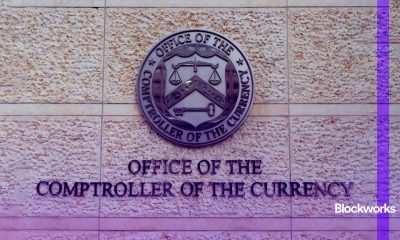
 Cryptocurrency6 days ago
Cryptocurrency6 days agoStripe’s stablecoin biz seeks national bank trust charter – Crypto News
-
Technology1 week ago
STON.fi CMO on Building TON’s Largest Swap & Liquidity Aggregator – Crypto News
-

 others1 week ago
others1 week agoChina’s Commerce Ministry urges US to correct its wrong practices as soon as possible – Crypto News
-

 Technology1 week ago
Technology1 week agoChatGPT will soon pay for you! India’s AI payment pilot set to go live: What it means for users – Crypto News
-

 Blockchain1 week ago
Blockchain1 week agoCrypto Traders Show ‘Rationalization’ Behavior’ After Market Plunge – Crypto News
-
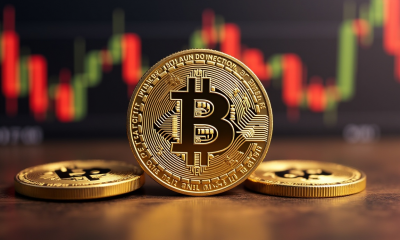
 Cryptocurrency1 week ago
Cryptocurrency1 week agoWhy Bitcoin could rebound up to 21% this week: experts explain – Crypto News
-

 Technology1 week ago
Technology1 week agoBest phones under ₹15,000: Oppo K13 5G, Infinix Note 50s, iQOO Z10x and more – Crypto News
-

 Metaverse1 week ago
Metaverse1 week agohuman intelligence for artificial minds – Crypto News
-

 others1 week ago
others1 week agoTrump’s tariff threat pushes US Dollar below 99 amid trade tensions – Crypto News
-

 Cryptocurrency1 week ago
Cryptocurrency1 week agoShiba Inu Burn Rate Crashes 99% as Crypto Sees Largest Liquidation Event Ever – Crypto News
-

 others1 week ago
others1 week agoEUR/JPY retreats as Euro slides on French political uncertainty – Crypto News
-
others1 week ago
Binance Founder CZ Addresses BNB’s Recent Strong Price Performance, Says It Has No Market Makers – Crypto News
-

 others1 week ago
others1 week agoWhich way out of the range – Crypto News
-

 Metaverse6 days ago
Metaverse6 days agoWalmart teams with OpenAI for ChatGPT purchases. The retailer is ‘ahead of the curve’. – Crypto News
-
Technology1 week ago
Tom Lee’s Fundstrat Predicts Ethereum Rally to $5,500 Following ETH ‘Bottom’ – Crypto News
-
others1 week ago
Peter Brandt Flips Bullish on Bitcoin, Ethereum, XRP, and XLM – Crypto News
-

 Cryptocurrency1 week ago
Cryptocurrency1 week agoThe Latest Nobel Peace Prize Winner Is a Bitcoin Supporter – Crypto News
-

 others1 week ago
others1 week agoA balanced approach to monetary policy only works if inflation expectations are anchored – Crypto News
-

 De-fi1 week ago
De-fi1 week agoDeFi Withstands Stress Test as Market Mayhem Wipes Out Nearly $20B – Crypto News
-
Business1 week ago
Crypto Market Loses $670 Billion on CEX Auto Liquidations, Altcoins Crash Intensifies – Crypto News
-

 Metaverse1 week ago
Metaverse1 week agoIndia key to shaping future of Artificial Intelligence, says Anthropic CEO Dario Amodei after meeting PM Modi – Crypto News
-

 Cryptocurrency1 week ago
Cryptocurrency1 week agoCrypto liquidations drive historic market turbulence – Crypto News
-

 Blockchain1 week ago
Blockchain1 week agoHow to Use ChatGPT to Discover Hidden Crypto Gems – Crypto News
-

 Cryptocurrency1 week ago
Cryptocurrency1 week agoHow Solana Overtook Ethereum’s Early Growth Curve – Crypto News
-
Technology1 week ago
Fed’s Anna Paulson Backs Rate Cuts, Downplays Trump Tariff Impact – Crypto News
-
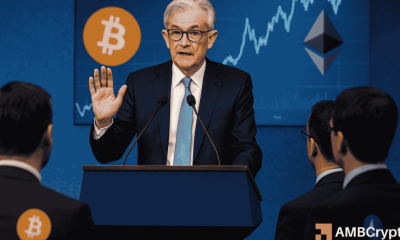
 Cryptocurrency6 days ago
Cryptocurrency6 days agoPowell speech steadies crypto market: Fed hints at slower balance-sheet runoff – Crypto News
-
Business6 days ago
Pro Says Ethereum Price is a Buy Despite Rising Liquidations and BlackRock Selling – Crypto News
-
Business6 days ago
Pro Says Ethereum Price is a Buy Despite Rising Liquidations and BlackRock Selling – Crypto News
-

 Technology6 days ago
Technology6 days agoApple launches MacBook Pro 14-inch with M5 chip in India, price starts at ₹1,69,900 – Crypto News
-

 Cryptocurrency1 week ago
Cryptocurrency1 week agoDecoding WLFI’s meltdown – Can a $7mln buyback undo a $190mln dump? – Crypto News
-
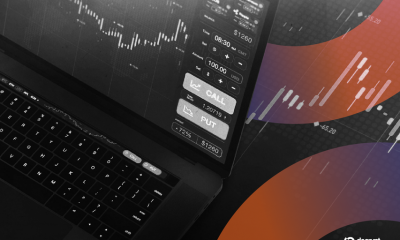
 Cryptocurrency1 week ago
Cryptocurrency1 week agoHow Crypto Traders Are Positioning Following ‘Black-Friday’s’ Crash – Crypto News
-
others1 week ago
Crypto Market Braces for Volatility Ahead of Key U.S. Economic Events This Week – Crypto News
-
Technology7 days ago
XRP Price Crashes as Whales Dump 2.23B Tokens — Is $2 the Next Stop? – Crypto News
-

 Cryptocurrency7 days ago
Cryptocurrency7 days ago$23 Billion XRP Milestone Spotlighted by CME Group: Details – Crypto News
-

 others6 days ago
others6 days agoSeems ‘prudent’ to cut rates further given lower inflation risks – Crypto News
-

 Metaverse5 days ago
Metaverse5 days agoChatGPT ‘adult model’ plan: OpenAI’s Sam Altman reacts to criticism, says ‘not elected moral police’ – Crypto News
-

 Technology1 week ago
Technology1 week agoAmazon Diwali bonanza: Top 5 deals on flagship mobiles you should not miss – iPhone 16, OnePlus 13 & more – Crypto News
-
Business1 week ago
Is the Bitcoin Top In? Raoul Pal Signals Higher Liquidity Cycle Despite Market Selloff – Crypto News
-

 Technology1 week ago
Technology1 week agoGemini Nano Banana model now generates and edits images inside Google apps: How it works – Crypto News
-

 Cryptocurrency1 week ago
Cryptocurrency1 week agoPolymarket bets trigger Nobel leak probe in Norway – Crypto News
-
Business1 week ago
Crypto Market Recovery: BTC, ETH, XRP, DOGE Surge 4-12% As Expert Sees V-Shape Upside – Crypto News
-
![Car Group Limited – CAR Elliott Wave technical analysis [Video]](https://dripp.zone/news/wp-content/uploads/2025/05/Car-Group-Limited-–-CAR-Elliott-Wave-technical-analysis-Video-400x240.jpg)
![Car Group Limited – CAR Elliott Wave technical analysis [Video]](https://dripp.zone/news/wp-content/uploads/2025/05/Car-Group-Limited-–-CAR-Elliott-Wave-technical-analysis-Video-80x80.jpg) others7 days ago
others7 days agoSamsara Inc. (IOT) laps the stock market: Here’s why – Crypto News
-
others7 days ago
Four Meme and BNB Partner on $45M ‘Rebirth Support’ Airdrop, First Batch Set to Begin – Crypto News
-

 Technology6 days ago
Technology6 days agoAMD strengthens AI push: Oracle to deploy 50,000 MI450 AI chips in data centers starting 2026 – Crypto News
-
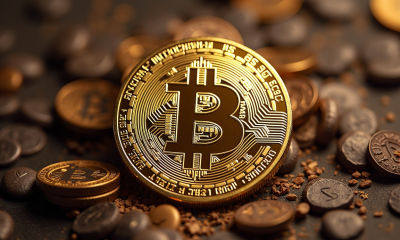
 Cryptocurrency6 days ago
Cryptocurrency6 days agoBeyond Bitcoin: How Asia’s new crypto playbook is breaking from the west – Crypto News
-

 Metaverse6 days ago
Metaverse6 days ago‘Erotica for verified adults’: OpenAI to allow mature content on ChatGPT; Sam Altman vows to treat adults like adults – Crypto News

![Nikkei Futures (NKD) reach historic highs, extending bullish rally [Video]](https://dripp.zone/news/wp-content/uploads/2025/10/Nikkei-Futures-NKD-reach-historic-highs-extending-bullish-rally-Video-400x240.jpg)
![Nikkei Futures (NKD) reach historic highs, extending bullish rally [Video]](https://dripp.zone/news/wp-content/uploads/2025/10/Nikkei-Futures-NKD-reach-historic-highs-extending-bullish-rally-Video-80x80.jpg)


